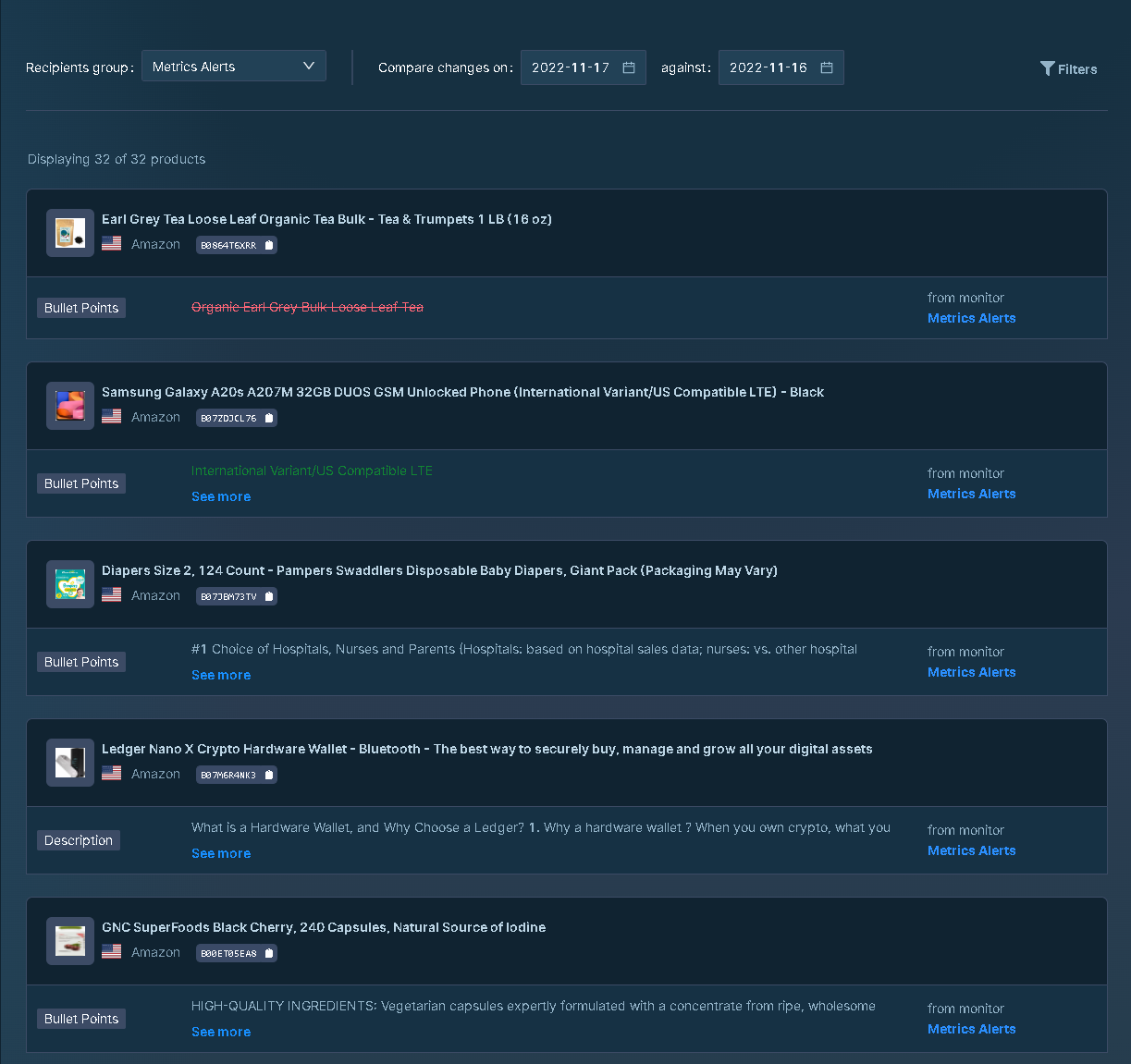
Get automated email notifications for critical product changes on Amazon and Walmart
DataHawk’s Product Alerting tool is a reliable and scalable monitoring and tracking system, enabling you to set up and receive daily email alerts based on specific triggers or changes occurring across products. You can set up alerts for any product on Amazon or Walmart that you are tracking in your DataHawk workspace to stay informed on any potential issues or opportunities that could impact your business performance. Alerts data is available for the last 3 months.
Alert: daily notification triggered by a change on a product property (or set of product properties).
Event: change on a product property.
Property: a specific type of product change that you can be alerted on (ex: title, Buy Box price, number of ratings, etc.)
Alert recipients’ group: a group of recipients for which you can activate email alerts.
Trigger: a preset change in a product’s property that you want to monitor. You can choose between preset triggers (DataHawk’s suggestions) or custom triggers (to tailor the rules to your needs)
<aside> ℹ️
You can also set up alerts and triggers for your competitors’ products to discretely monitor their optimization efforts, but to do so, you must be tracking their products before.
</aside>
